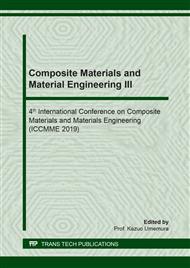p.71
p.77
p.83
p.89
p.95
p.101
p.109
p.115
p.121
Application of Variational Asymptotic Micromechanical Method to Strength Analysis of Composite Materials
Abstract:
One of the most important features of a material to know before using it is the maximum limit of the load at which it fails. This paper presents a micromechanical strength theory to estimate the tensile strength of the unidirectional fiber reinforced composite. The fibers used can be considered transversely isotropic and elastic till failure, but the matrix material is considered to be Elastic-plastic. The mathematical formulation used is the Variational-Asymptotic Method (VAM), which is used to construct the asymptotically-correct a reduced-dimensional model that is free of a priori assumption regarding the kinematics. The 3-D strain generated in each constituent material is explicitly expressed in 1-D strains and initial curvatures. The advantage of using VAM is that the stress state correlation of constituent materials is taken care of while applying warping constraints. Prandtl-Reuss plasticity theory has been implemented for the plastic region constitutive relationship. The other advantage of this work is that the load-bearing capacity of the composite beyond the elastic region has been considered. Good agreement has been found between experimental data and VAM analysis.
Info:
Periodical:
Pages:
95-100
Citation:
Online since:
May 2019
Authors:
Price:
Сopyright:
© 2019 Trans Tech Publications Ltd. All Rights Reserved
Share:
Citation:


